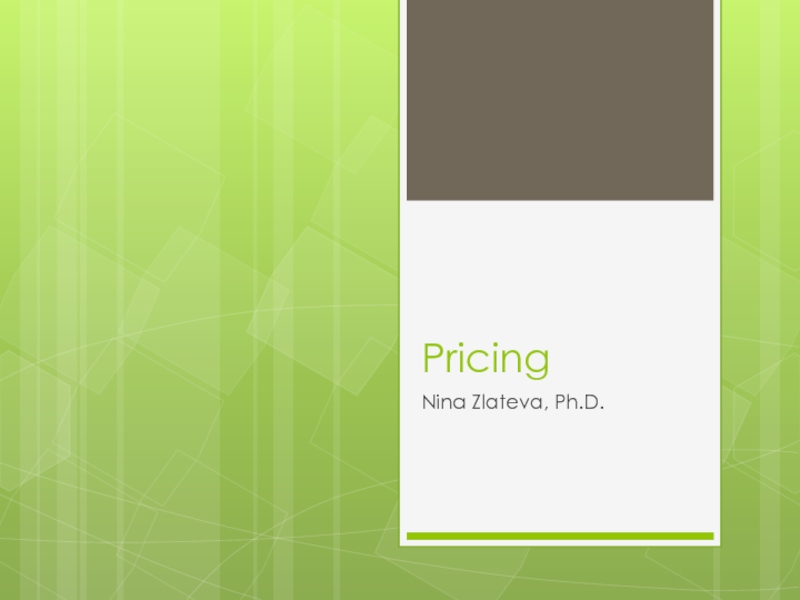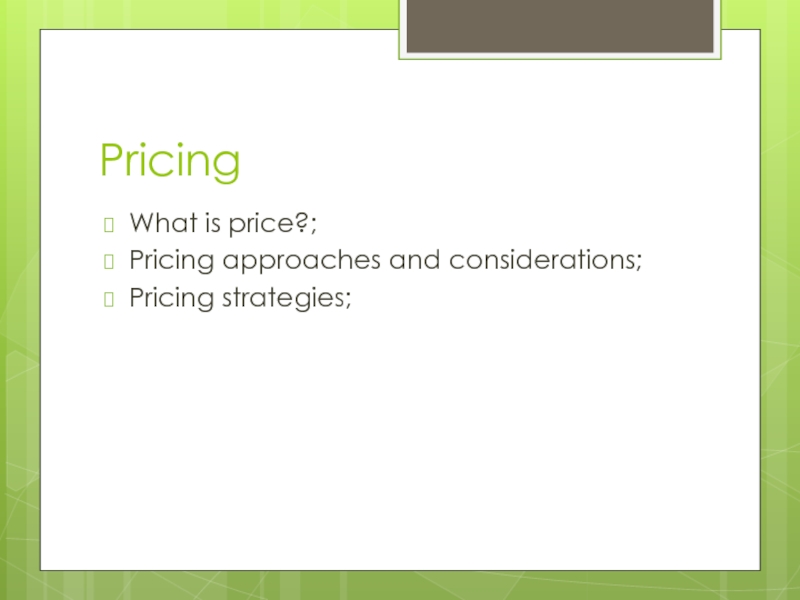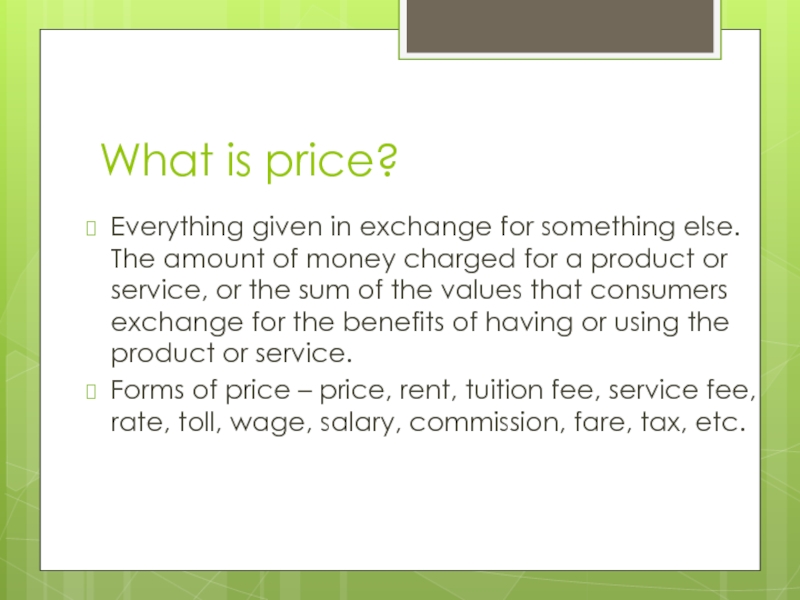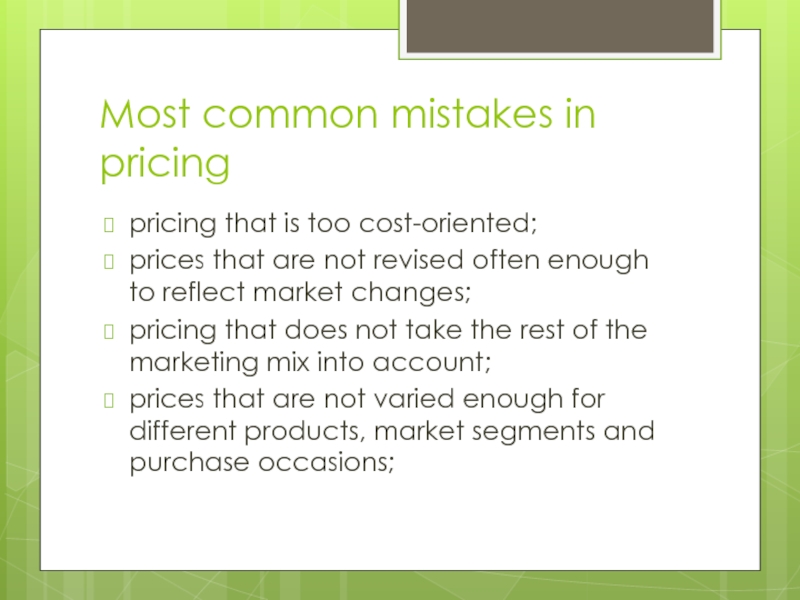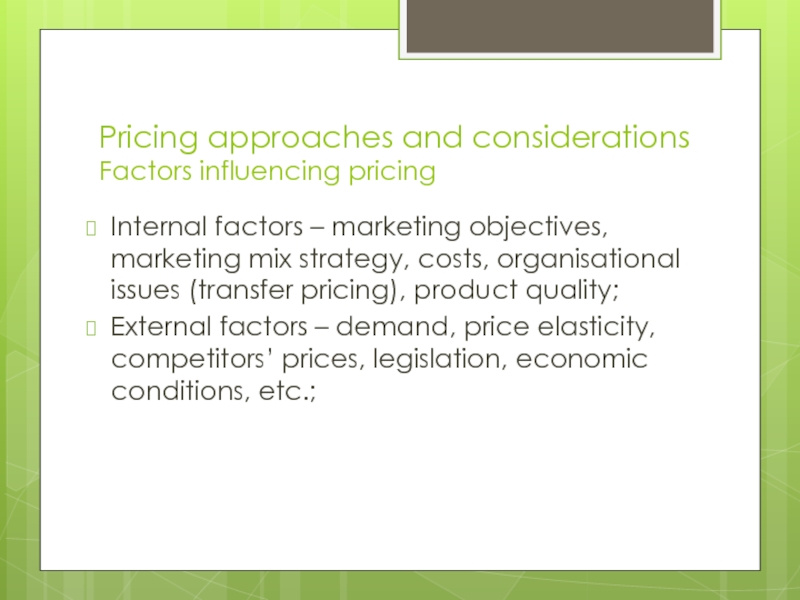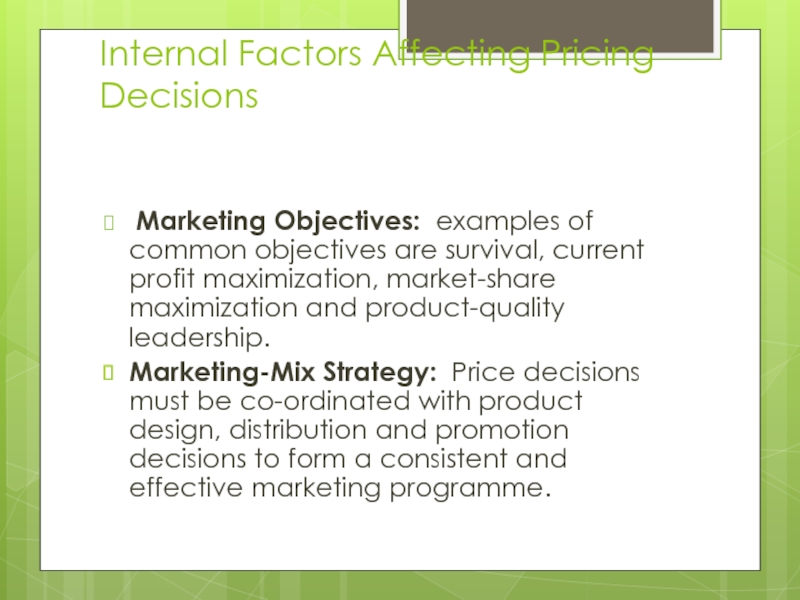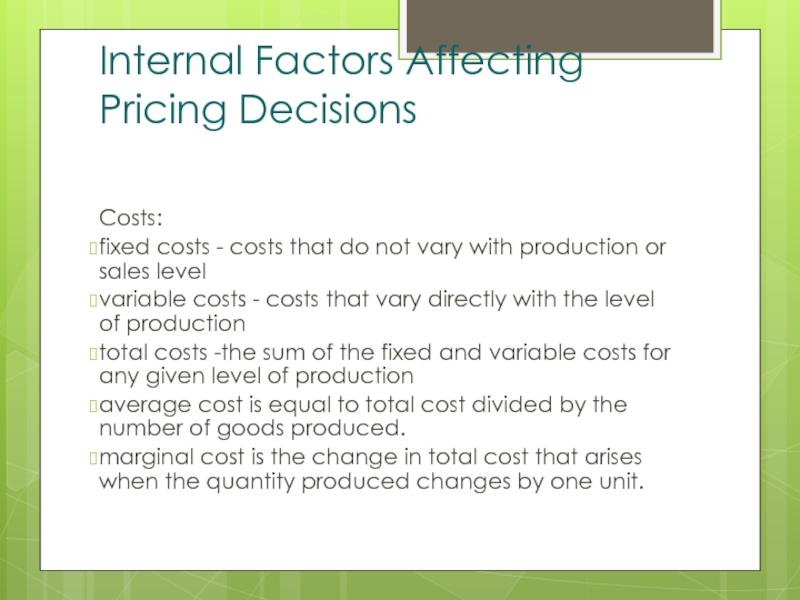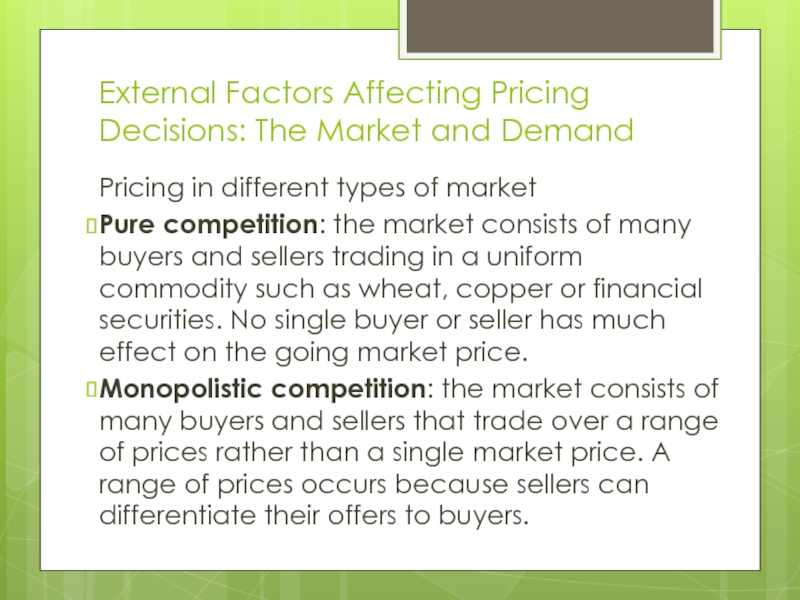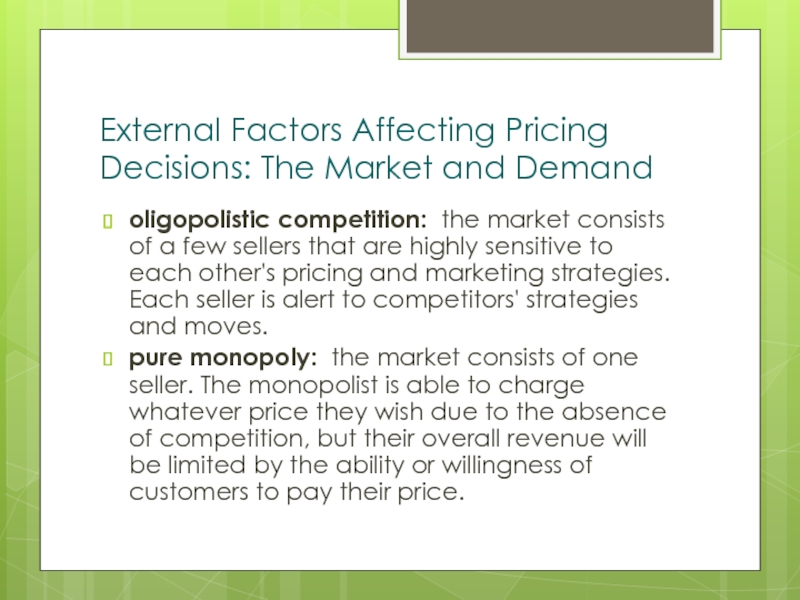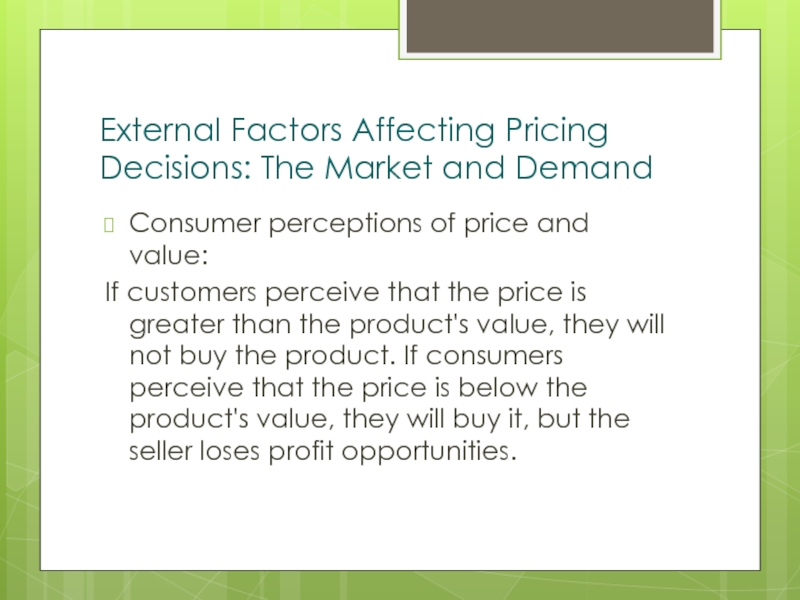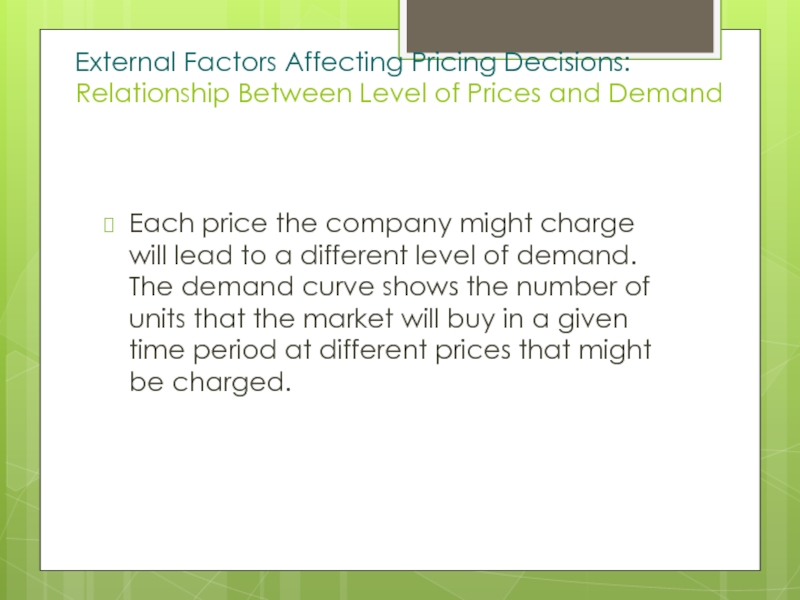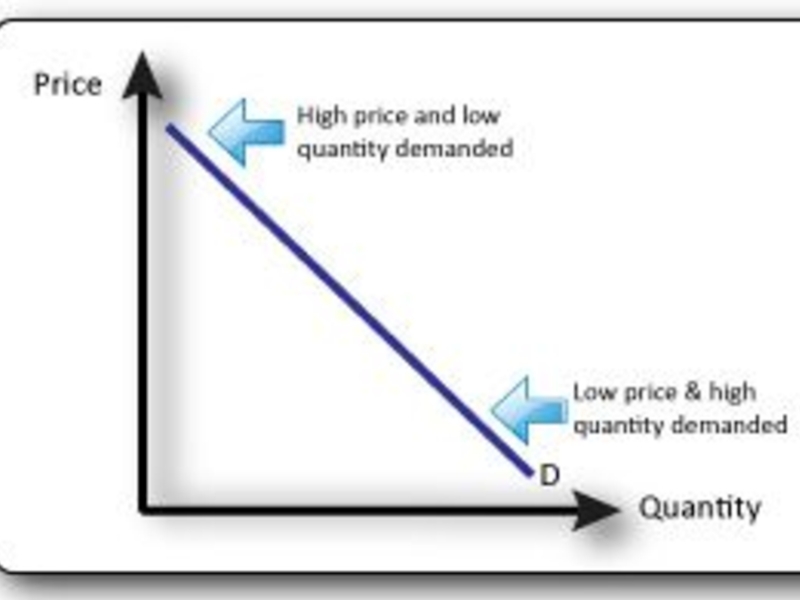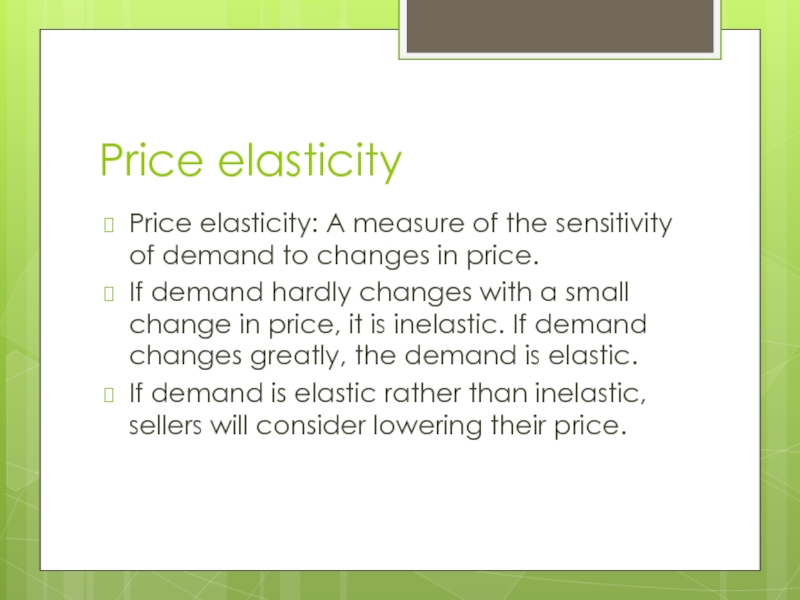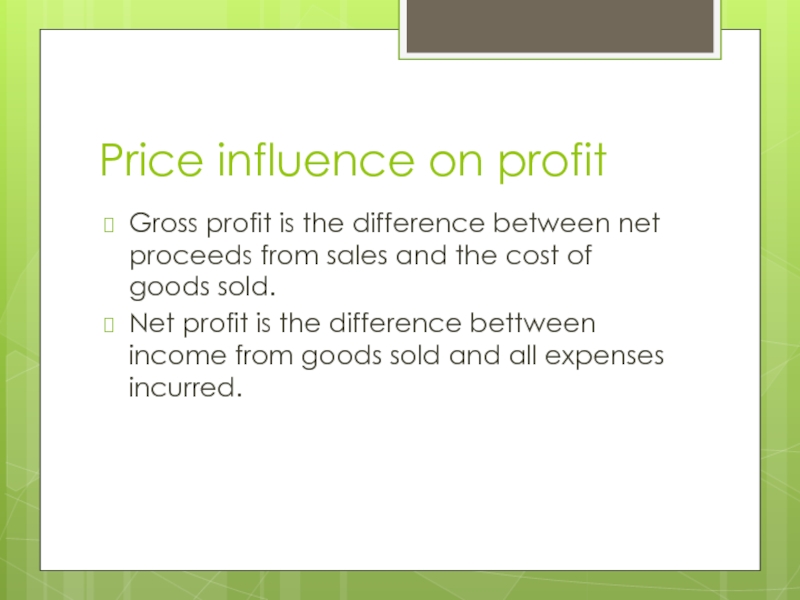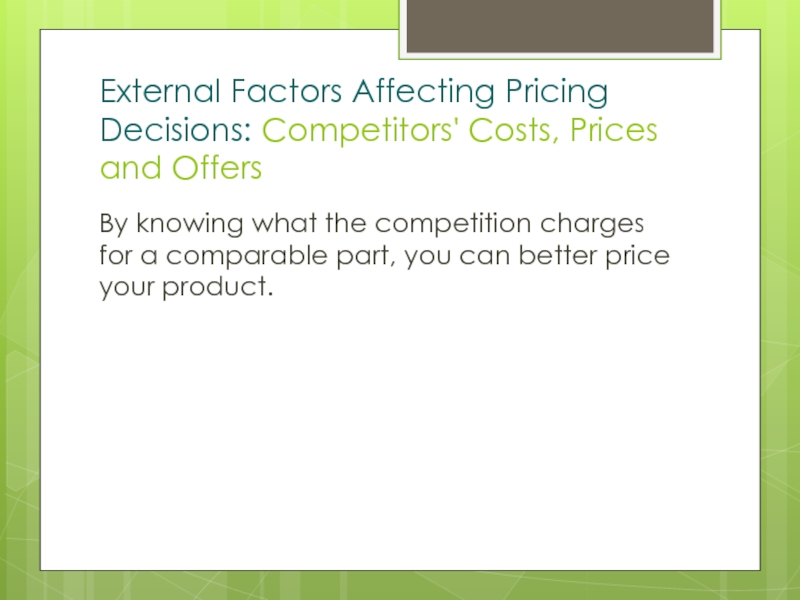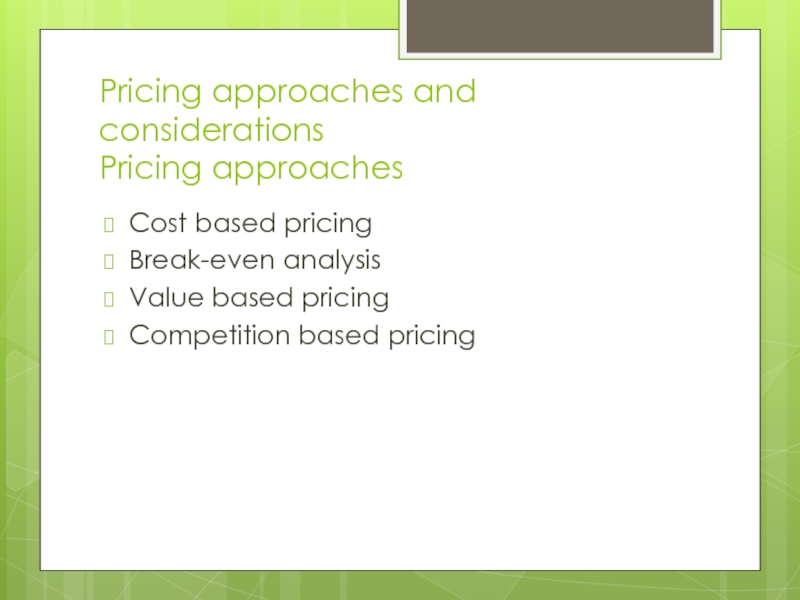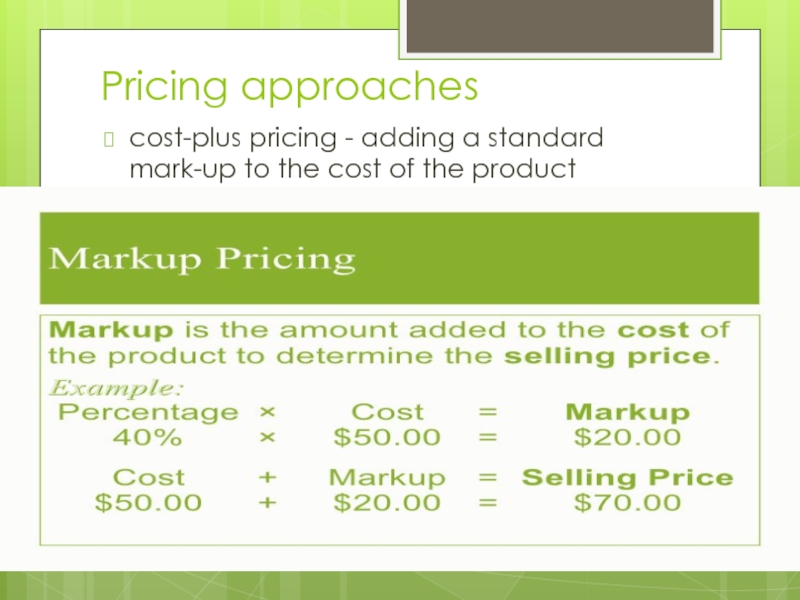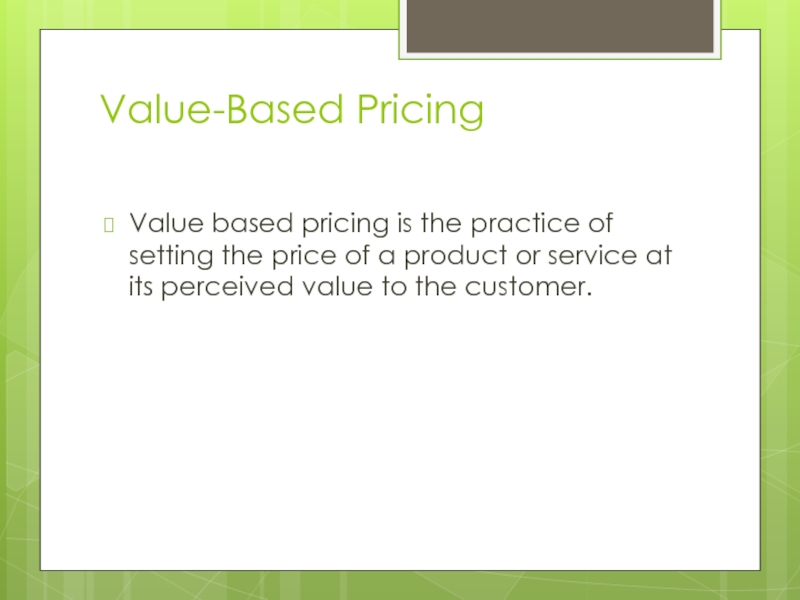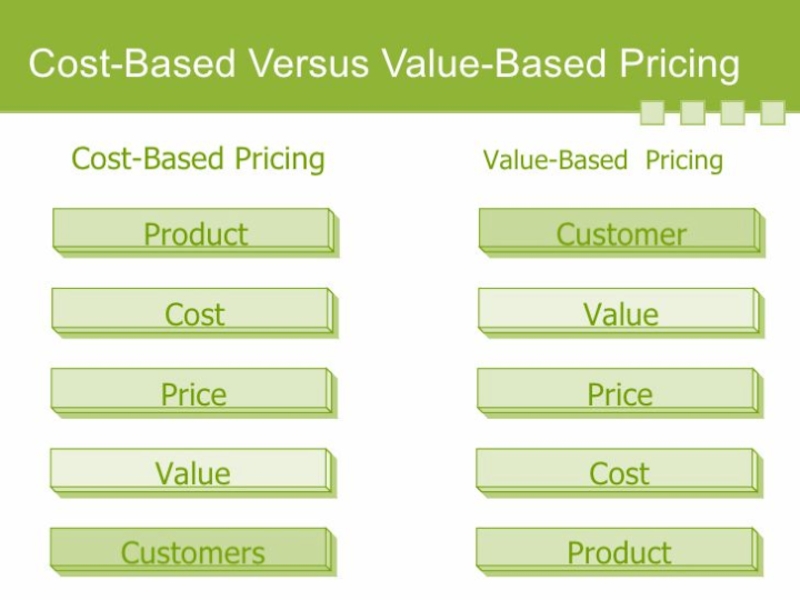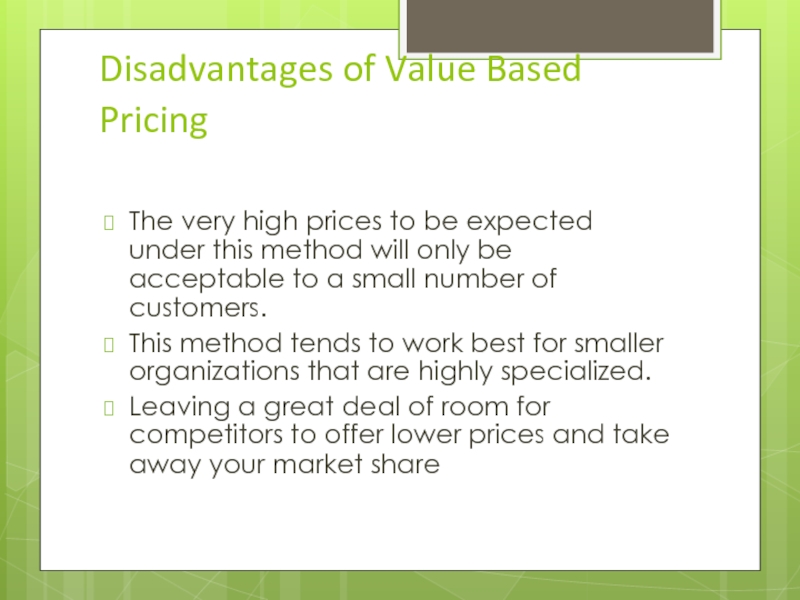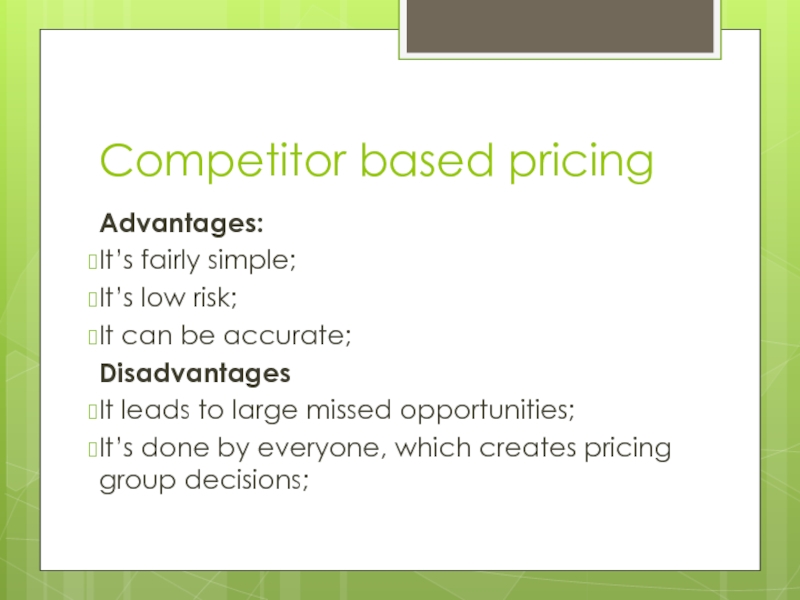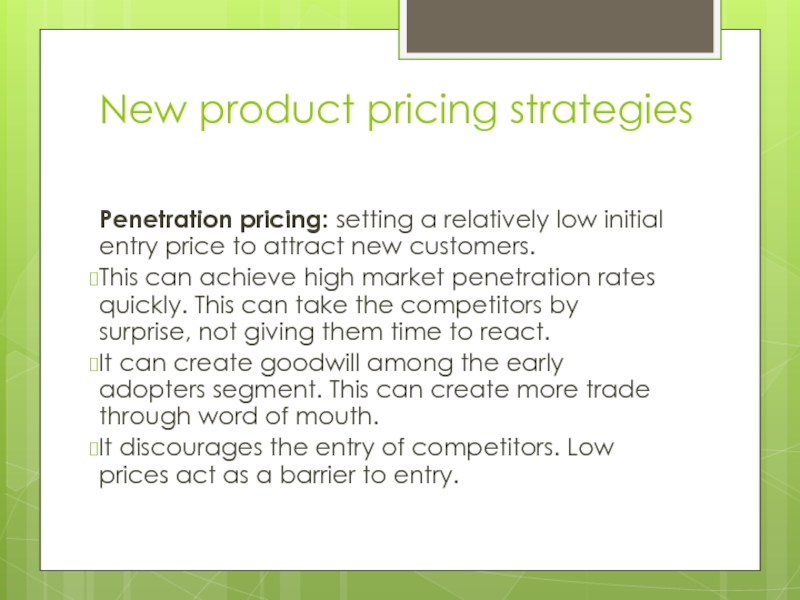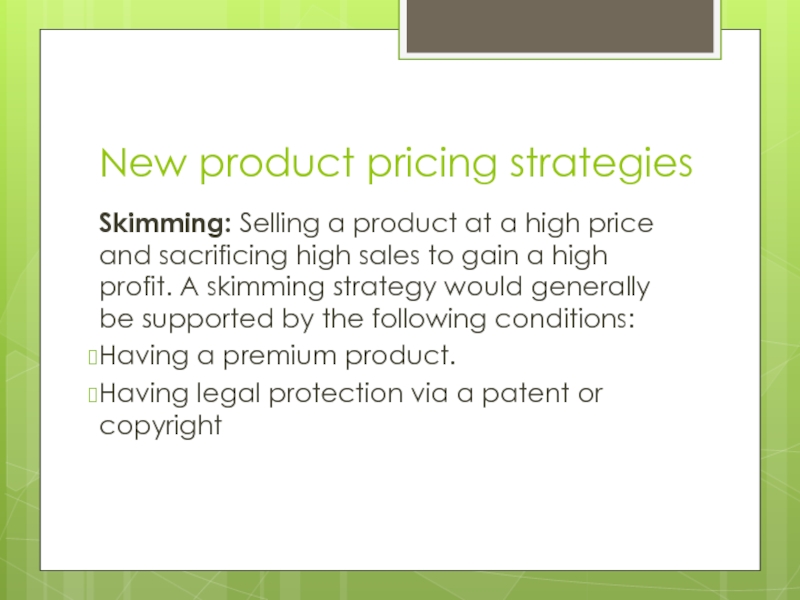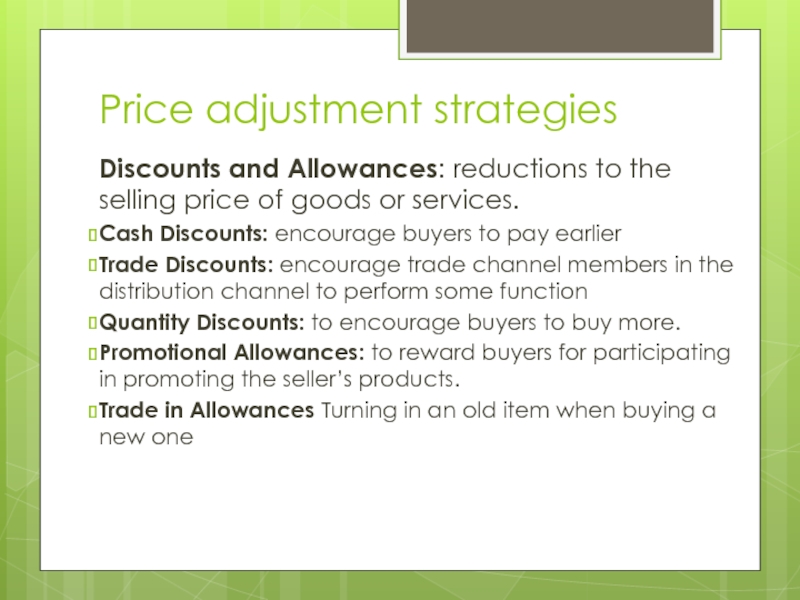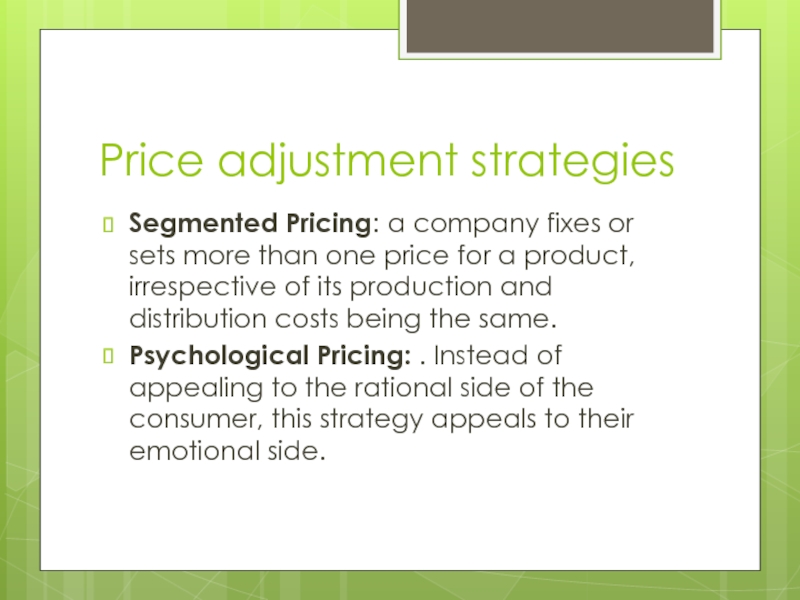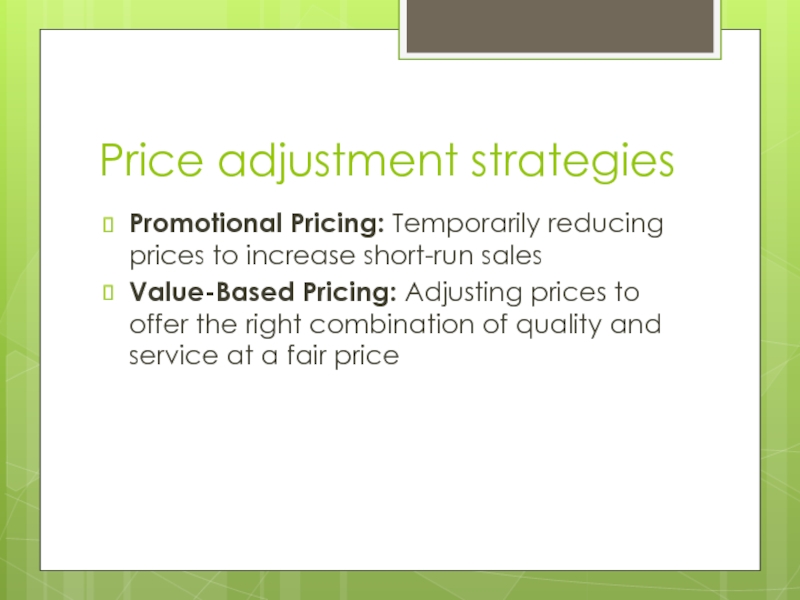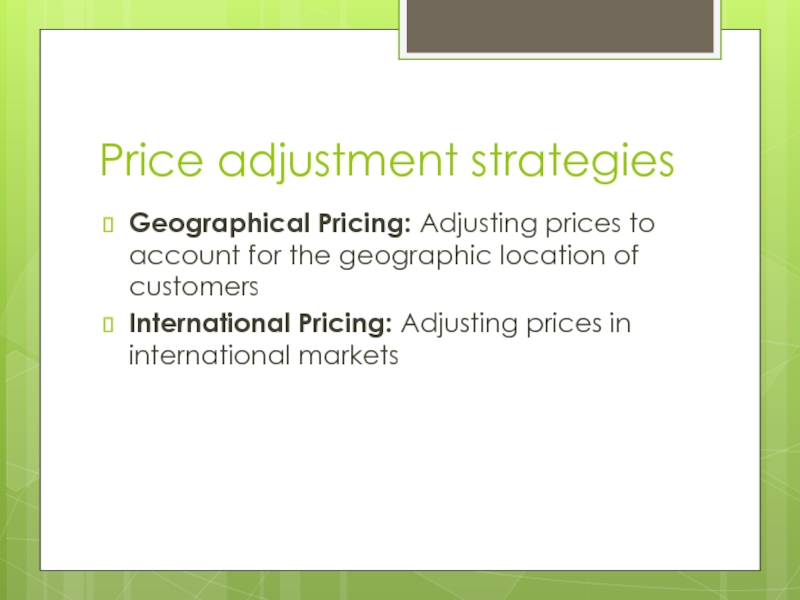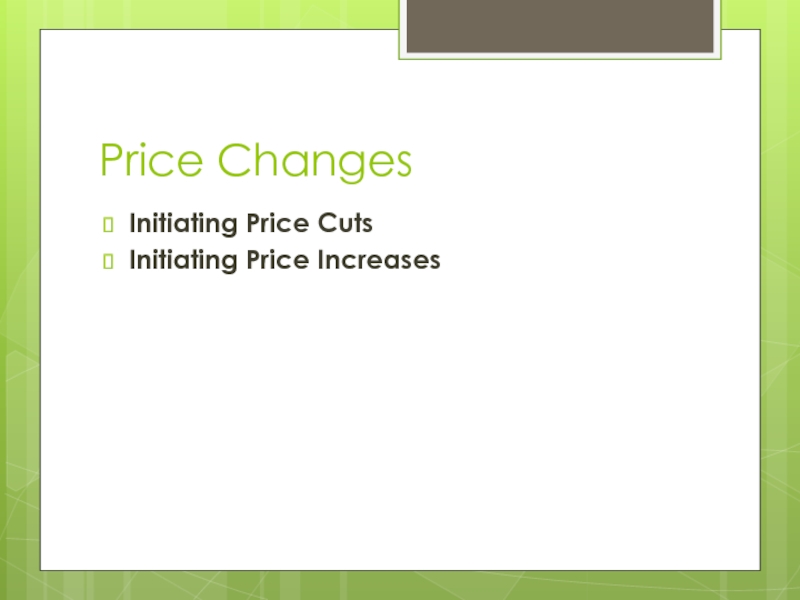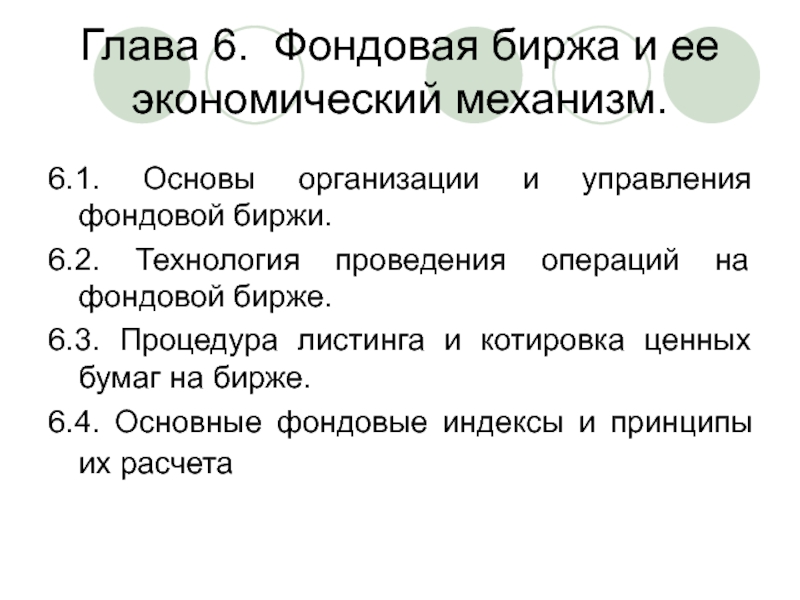- Главная
- Разное
- Дизайн
- Бизнес и предпринимательство
- Аналитика
- Образование
- Развлечения
- Красота и здоровье
- Финансы
- Государство
- Путешествия
- Спорт
- Недвижимость
- Армия
- Графика
- Культурология
- Еда и кулинария
- Лингвистика
- Английский язык
- Астрономия
- Алгебра
- Биология
- География
- Детские презентации
- Информатика
- История
- Литература
- Маркетинг
- Математика
- Медицина
- Менеджмент
- Музыка
- МХК
- Немецкий язык
- ОБЖ
- Обществознание
- Окружающий мир
- Педагогика
- Русский язык
- Технология
- Физика
- Философия
- Химия
- Шаблоны, картинки для презентаций
- Экология
- Экономика
- Юриспруденция
Pricing презентация
Содержание
- 1. Pricing
- 2. Pricing What is price?; Pricing approaches and considerations; Pricing strategies;
- 3. What is price? Everything given in exchange
- 4. Most common mistakes in pricing pricing that
- 5. Pricing approaches and considerations Factors influencing pricing
- 6. Internal Factors Affecting Pricing Decisions
- 7. Internal Factors Affecting Pricing Decisions Costs:
- 8. External Factors Affecting Pricing Decisions: The Market
- 9. External Factors Affecting Pricing Decisions: The Market
- 10. External Factors Affecting Pricing Decisions: The Market
- 13. Price elasticity Price elasticity: A measure of
- 14. Price influence on profit Gross profit is
- 15. External Factors Affecting Pricing Decisions: Competitors' Costs,
- 16. Pricing approaches and considerations Pricing approaches Cost
- 17. Pricing approaches cost-plus pricing - adding a
- 18. Pricing approaches and considerations Pricing approaches – Break-even analysis
- 19. Value-Based Pricing Value based pricing is
- 21. Advantages of Value Based Pricing Increases
- 22. Disadvantages of Value Based Pricing The
- 23. Competitor based pricing Advantages: It’s fairly simple;
- 24. Pricing strategies New product pricing strategies –
- 25. New product pricing strategies Penetration pricing:
- 26. New product pricing strategies Skimming: Selling a
- 27. Product mix strategies Product line pricing
- 28. Price adjustment strategies Discounts and Allowances:
- 29. Price adjustment strategies Segmented Pricing: a company
- 30. Price adjustment strategies Promotional Pricing: Temporarily reducing
- 31. Price adjustment strategies Geographical Pricing: Adjusting prices
- 32. Price Changes Initiating Price Cuts Initiating Price Increases
Слайд 3What is price?
Everything given in exchange for something else. The amount
of money charged for a product or service, or the sum of the values that consumers exchange for the benefits of having or using the product or service.
Forms of price – price, rent, tuition fee, service fee, rate, toll, wage, salary, commission, fare, tax, etc.
Forms of price – price, rent, tuition fee, service fee, rate, toll, wage, salary, commission, fare, tax, etc.
Слайд 4Most common mistakes in pricing
pricing that is too cost-oriented;
prices that
are not revised often enough to reflect market changes;
pricing that does not take the rest of the marketing mix into account;
prices that are not varied enough for different products, market segments and purchase occasions;
pricing that does not take the rest of the marketing mix into account;
prices that are not varied enough for different products, market segments and purchase occasions;
Слайд 5Pricing approaches and considerations
Factors influencing pricing
Internal factors – marketing objectives, marketing
mix strategy, costs, organisational issues (transfer pricing), product quality;
External factors – demand, price elasticity, competitors’ prices, legislation, economic conditions, etc.;
External factors – demand, price elasticity, competitors’ prices, legislation, economic conditions, etc.;
Слайд 6Internal Factors Affecting Pricing Decisions
Marketing Objectives: examples of common objectives
are survival, current profit maximization, market-share maximization and product-quality leadership.
Marketing-Mix Strategy: Price decisions must be co-ordinated with product design, distribution and promotion decisions to form a consistent and effective marketing programme.
Marketing-Mix Strategy: Price decisions must be co-ordinated with product design, distribution and promotion decisions to form a consistent and effective marketing programme.
Слайд 7Internal Factors Affecting Pricing Decisions
Costs:
fixed costs - costs that do
not vary with production or sales level
variable costs - costs that vary directly with the level of production
total costs -the sum of the fixed and variable costs for any given level of production
average cost is equal to total cost divided by the number of goods produced.
marginal cost is the change in total cost that arises when the quantity produced changes by one unit.
variable costs - costs that vary directly with the level of production
total costs -the sum of the fixed and variable costs for any given level of production
average cost is equal to total cost divided by the number of goods produced.
marginal cost is the change in total cost that arises when the quantity produced changes by one unit.
Слайд 8External Factors Affecting Pricing Decisions: The Market and Demand
Pricing in different
types of market
Pure competition: the market consists of many buyers and sellers trading in a uniform commodity such as wheat, copper or financial securities. No single buyer or seller has much effect on the going market price.
Monopolistic competition: the market consists of many buyers and sellers that trade over a range of prices rather than a single market price. A range of prices occurs because sellers can differentiate their offers to buyers.
Pure competition: the market consists of many buyers and sellers trading in a uniform commodity such as wheat, copper or financial securities. No single buyer or seller has much effect on the going market price.
Monopolistic competition: the market consists of many buyers and sellers that trade over a range of prices rather than a single market price. A range of prices occurs because sellers can differentiate their offers to buyers.
Слайд 9External Factors Affecting Pricing Decisions: The Market and Demand
oligopolistic competition: the
market consists of a few sellers that are highly sensitive to each other's pricing and marketing strategies. Each seller is alert to competitors' strategies and moves.
pure monopoly: the market consists of one seller. The monopolist is able to charge whatever price they wish due to the absence of competition, but their overall revenue will be limited by the ability or willingness of customers to pay their price.
pure monopoly: the market consists of one seller. The monopolist is able to charge whatever price they wish due to the absence of competition, but their overall revenue will be limited by the ability or willingness of customers to pay their price.
Слайд 10External Factors Affecting Pricing Decisions: The Market and Demand
Consumer perceptions of
price and value:
If customers perceive that the price is greater than the product's value, they will not buy the product. If consumers perceive that the price is below the product's value, they will buy it, but the seller loses profit opportunities.
If customers perceive that the price is greater than the product's value, they will not buy the product. If consumers perceive that the price is below the product's value, they will buy it, but the seller loses profit opportunities.
Слайд 11 External Factors Affecting Pricing Decisions: Relationship Between Level of Prices and
Demand
Each price the company might charge will lead to a different level of demand. The demand curve shows the number of units that the market will buy in a given time period at different prices that might be charged.
Слайд 13Price elasticity
Price elasticity: A measure of the sensitivity of demand to
changes in price.
If demand hardly changes with a small change in price, it is inelastic. If demand changes greatly, the demand is elastic.
If demand is elastic rather than inelastic, sellers will consider lowering their price.
If demand hardly changes with a small change in price, it is inelastic. If demand changes greatly, the demand is elastic.
If demand is elastic rather than inelastic, sellers will consider lowering their price.
Слайд 14Price influence on profit
Gross profit is the difference between net proceeds
from sales and the cost of goods sold.
Net profit is the difference bettween income from goods sold and all expenses incurred.
Net profit is the difference bettween income from goods sold and all expenses incurred.
Слайд 15External Factors Affecting Pricing Decisions: Competitors' Costs, Prices and Offers
By
knowing what the competition charges for a comparable part, you can better price your product.
Слайд 16Pricing approaches and considerations
Pricing approaches
Cost based pricing
Break-even analysis
Value based pricing
Competition
based pricing
Слайд 19Value-Based Pricing
Value based pricing is the practice of setting the price
of a product or service at its perceived value to the customer.
Слайд 21Advantages of Value Based Pricing
Increases profits. This method results in the
highest possible price that you can charge, and so maximizes profits.
Customer loyalty. Despite the high prices charged, you can achieve extremely high customer loyalty for repeat business and referrals, but only if the service or product provided justifies the high price.
Customer loyalty. Despite the high prices charged, you can achieve extremely high customer loyalty for repeat business and referrals, but only if the service or product provided justifies the high price.
Слайд 22Disadvantages of Value Based Pricing
The very high prices to be expected
under this method will only be acceptable to a small number of customers.
This method tends to work best for smaller organizations that are highly specialized.
Leaving a great deal of room for competitors to offer lower prices and take away your market share
This method tends to work best for smaller organizations that are highly specialized.
Leaving a great deal of room for competitors to offer lower prices and take away your market share
Слайд 23Competitor based pricing
Advantages:
It’s fairly simple;
It’s low risk;
It can be accurate;
Disadvantages
It leads
to large missed opportunities;
It’s done by everyone, which creates pricing group decisions;
It’s done by everyone, which creates pricing group decisions;
Слайд 24Pricing strategies
New product pricing strategies – market-skimming pricing and market penetration
pricing
Product-mix pricing strategies – product line pricing, optional product pricing, by-product pricing, captive product pricing, product-bundle pricing
Price adjustment strategies – discounts and allowances, psychological pricing, promotional pricing
Price discrimination
Product-mix pricing strategies – product line pricing, optional product pricing, by-product pricing, captive product pricing, product-bundle pricing
Price adjustment strategies – discounts and allowances, psychological pricing, promotional pricing
Price discrimination
Слайд 25New product pricing strategies
Penetration pricing: setting a relatively low initial entry
price to attract new customers.
This can achieve high market penetration rates quickly. This can take the competitors by surprise, not giving them time to react.
It can create goodwill among the early adopters segment. This can create more trade through word of mouth.
It discourages the entry of competitors. Low prices act as a barrier to entry.
This can achieve high market penetration rates quickly. This can take the competitors by surprise, not giving them time to react.
It can create goodwill among the early adopters segment. This can create more trade through word of mouth.
It discourages the entry of competitors. Low prices act as a barrier to entry.
Слайд 26New product pricing strategies
Skimming: Selling a product at a high price
and sacrificing high sales to gain a high profit. A skimming strategy would generally be supported by the following conditions:
Having a premium product.
Having legal protection via a patent or copyright
Having a premium product.
Having legal protection via a patent or copyright
Слайд 27Product mix strategies
Product line pricing refers to the practice of reviewing
and setting prices for multiple products that a company offers in coordination with one another.
Optional pricing: Pricing optional or accessory products sold with the main product
Captive product pricing: Pricing products that must be used with the main product
By Product Pricing: By product is something which is produced as a result of producing something else
Product bundle pricing: Pricing bundles of products sold together
Optional pricing: Pricing optional or accessory products sold with the main product
Captive product pricing: Pricing products that must be used with the main product
By Product Pricing: By product is something which is produced as a result of producing something else
Product bundle pricing: Pricing bundles of products sold together
Слайд 28Price adjustment strategies
Discounts and Allowances: reductions to the selling price of
goods or services.
Cash Discounts: encourage buyers to pay earlier
Trade Discounts: encourage trade channel members in the distribution channel to perform some function
Quantity Discounts: to encourage buyers to buy more.
Promotional Allowances: to reward buyers for participating in promoting the seller’s products.
Trade in Allowances Turning in an old item when buying a new one
Cash Discounts: encourage buyers to pay earlier
Trade Discounts: encourage trade channel members in the distribution channel to perform some function
Quantity Discounts: to encourage buyers to buy more.
Promotional Allowances: to reward buyers for participating in promoting the seller’s products.
Trade in Allowances Turning in an old item when buying a new one
Слайд 29Price adjustment strategies
Segmented Pricing: a company fixes or sets more than
one price for a product, irrespective of its production and distribution costs being the same.
Psychological Pricing: . Instead of appealing to the rational side of the consumer, this strategy appeals to their emotional side.
Psychological Pricing: . Instead of appealing to the rational side of the consumer, this strategy appeals to their emotional side.
Слайд 30Price adjustment strategies
Promotional Pricing: Temporarily reducing prices to increase short-run sales
Value-Based
Pricing: Adjusting prices to offer the right combination of quality and service at a fair price
Слайд 31Price adjustment strategies
Geographical Pricing: Adjusting prices to account for the geographic
location of customers
International Pricing: Adjusting prices in international markets
International Pricing: Adjusting prices in international markets
